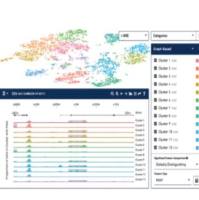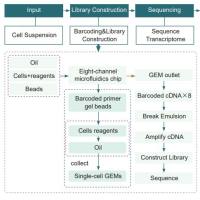Comparative Genomics of the Dictyostelids
互联网
647
The complete genomes of Dictyostelium discoideum , Dictyostelium purpureum , Polysphondylium pallidum and Dictyostelium fasciculatum have been sequenced. The proteins predicted to be encoded by the genes in each species have been compared to each other as well as to the complete compilation of nonredundant proteins from bacteria, plants, fungi, and animals. Likely functions have been assigned to about half of the proteins on the basis of sequence similarity to proteins with experimentally defined functions or properties. Even when the sequence similarity is not sufficiently high to have much confidence in the predicted function of the dictyostelid proteins, the shared ancestry of the proteins can often be clearly recognized. The degree of divergence within such clusters of orthologous proteins can then be used to establish the evolutionary pathways leading to each species and estimate the approximate time of divergence. This approach has established that the dictyostelids are a monophyletic group with four major groups that diverged from the line leading to animals shortly before the fungi. D . fasciculatum and P . pallidum are representatives of group 1 and group 2 dictyostelids, respectively. Their common ancestor diverged about 600–800 million years ago from the line leading to D . discoideum and D . purpureum which are group 4 dictyostelids. Each of these species encodes about 11,000–12,000 proteins which is almost twice that in the yeasts. Most of the genes known to be involved in specific signal transduction pathways that mediate intercellular communication are present in each of the sequenced species but both P . pallidum and D . fasciculatum appear to be missing the gene responsible for synthesis of GABA, gadA , suggesting that release of the SDF-2 precursor AcbA is not regulated by GABA in these species as it is in D . discoideum . Likewise, the gene responsible for making cytokinins, iptA , appears to have entered by horizontal gene transfer from bacteria into the genome of the common ancestor of group 4 dictyostelids after they diverged from the group 1 and 2 species. Therefore, it is unlikely that P . pallidum or D . fasciculatum has the ability to make or respond to the cytokinin discadenine which induces rapid encapsulation of spores and maintains their dormancy in D . discoideum . Other predictions from comparative genomics among the dictyostelids are reviewed and evaluated.









